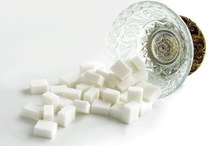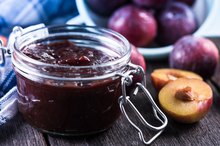Malic Acid Vs. Citric Acid
Both citric acid and malic acid are on the GRAS, or Generally Recognized as Safe, list maintained by the U.S. Food and Drug Administration. Citric acid as well as its potassium, sodium and calcium salts is classified as GRAS for general purpose use in foods. Malic acid also is approved for general purpose or “miscellaneous” use.
Citric Acid
Citric acid is the most commonly used acidulant for food. It’s been used for well over a century. Citric acid used to be mainly extracted from fruits like lemons and limes. These days it’s most often made using fermentation technology which involves mold fermentation of sugar solutions. Citric acid has a tart taste that is used as the standard comparison for other acidulants.
- Citric acid is the most commonly used acidulant for food.
- Citric acid used to be mainly extracted from fruits like lemons and limes.
Malic Acid
Types of Citric Acid
Learn More
Malic acid occurs naturally in fruits such as apples and berries. It’s also the second major acid in citrus fruits, following citric acid. Malic acid used in foods most often is created via hydration of maleic acid and fumaric acid. Malic acid is considered 78 to 83 percent as tart as citric acid 23.
- Malic acid occurs naturally in fruits such as apples and berries.
- Malic acid used in foods most often is created via hydration of maleic acid and fumaric acid.
Common Citric Acid Uses
Citric acid has many uses in food. It serves as a flavor enhancer, a pH regulator, a preservative, and as an antioxidant synergist with erythorbic or ascorbic acid, such as:
- on fresh or frozen fruit
- which prevents color
- flavor degradation
Citric acid and its salts also prevent crystallization in honey, are used in clarifying fruit juices and to stabilize spices. Citric acid is most often used in beverages. In fact, about 65 percent of citric acid consumed is used in drinks. You’ll commonly find it in carbonated drinks. It’s also common in wine coolers, cocktail mixers and iced tea. You’ll also find it in candy, dried fruit, canned fruit, jams and jellies and gelatin.
- Citric acid has many uses in food.
- You’ll commonly find it in carbonated drinks.
Common Malic Acid Uses
Potassium Bisulphite as a Food Preservative
Learn More
Malic acid is primarily used in fruit-flavored drinks. It stabilizes their color and also enhances flavor. For example, it’s commonly found in low-calorie drinks, where it masks the off-flavor of artificial sweeteners. You’ll also find it in cider and apple-flavored drinks, candy, gum, fruit butters and jams and jellies.
- Malic acid is primarily used in fruit-flavored drinks.
- For example, it’s commonly found in low-calorie drinks, where it masks the off-flavor of artificial sweeteners.
Related Articles
References
- “Processing Fruits”; Diane M. Barrett, et al.; 2005
- FDA.gov: Title 21, Subpart B, Sec. 184.1069 Malic acid
- Encyclopedia Britannica: Malic Acid
- Center for Science in the Public Interest. "Chemical Cuisine — Learn about Food Additives." https://cspinet.org/eating-healthy/chemical-cuisine.
- Codex Alimentarius, Food Additives Online Database. "Codex General Standard for Food Additives (GSFA) Online Database." http://www.fao.org/fao-who-codexalimentarius/standards/gsfa/en/.
- Max B, Salgado JM, Rodríguez N, Cortés S, Converti A, Domínguez JM. "Biotechnological Production of Citric Acid." Braz J Microbiol. 2010 Oct;41(4):862-75. http://www.ncbi.nlm.nih.gov/pmc/articles/PMC3769771/.
- United States Food and Drug Administration Database of Select Committee on GRAS Substances (SCOGS) Reviews"Citric acid." http://www.accessdata.fda.gov/scripts/fcn/fcnDetailNavigation.cfm?rpt=scogsListing&id=82.
- University of Wisconsin Hospitals Health Information: Health Facts for You. "Kidney Health: Citric Acid and Kidney Stones." http://www.uwhealth.org/healthfacts/nutrition/353.html.
Writer Bio
Linda Tarr Kent is a reporter and editor with more than 20 years experience at Gannett Company Inc., The McClatchy Company, Sound Publishing Inc., Mach Publishing, MomFit The Movement and other companies. Her area of expertise is health and fitness. She is a Bosu fitness and stand-up paddle surfing instructor. Kent holds a bachelor's degree in journalism from Washington State University.









